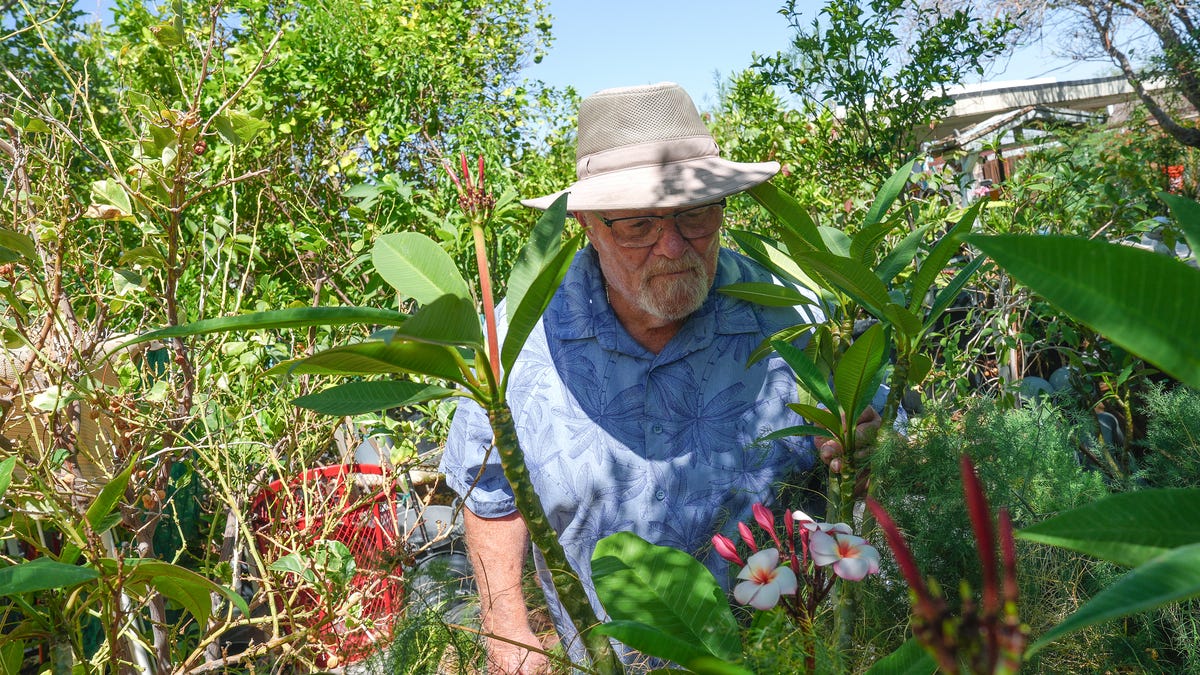You might have seen the reports and videos flying around TikTok advocating against using vinyl and laminate flooring in high-humidity rooms. Content creators have gone viral with images of mold and mildew hiding beneath their feet and warning of the health risks they pose. Rumor has it that the popular and cost-effective vinyl or laminate floors actually come with a higher price tag than anticipated, because you’ll have to replace them every five years.
But is this true, or are these creators just looking for clicks? We wanted to get to the truth of the matter, so we brought those rumors to two laminate and engineered flooring specialists. Neel Bradham, CEO of Parador, and Rotem Eylor, CEO of Republic Floor, are sharing everything you need to know about these affordable flooring options and busting a few of the myths floating around.
Not All Vinyl and Laminate Is Waterproof: Here’s What to Look For
Did you know there’s not just one type of vinyl and laminate? These materials come in a variety of build-ups with different technical specifications. Though they can have a similar appearance and function, vinyl and laminate are two very different materials in terms of structure, durability, and water resistance.
“A common misconception is that all types of vinyl and laminate flooring are waterproof,” Eylor says. “There is a difference between waterproof and water-resistant, and they handle humidity differently with varying resistance levels.” Waterproof materials are impervious to water, providing a complete barrier, while water-resistant materials only resist water penetration to a certain degree before the water seeps through.
“Vinyl, particularly solid vinyl, is completely waterproof, making it an ideal choice for areas with high moisture exposure, such as kitchens and bathrooms,” Bradham says. “Its robust composition also makes it highly durable and easy to maintain.” As a general rule, vinyl made of wood plastic composite (WPC) and stone-plastic composite core (SPC) is waterproof, whereas luxury vinyl plank (LVP) and PVC vinyl are only water-resistant.
Laminate is also typically water-resistant, with different products offering varying levels of resistance. Basic ranges are typically water-resistant for up to 24 hours in standing water, while other laminates extend that resistance to 48 hours. “When choosing between vinyl and laminate, the decision should always be based on the specific product’s technical specifications and the room’s conditions,” Bradham says. “No single solution works universally across all scenarios.”
Will Your Flooring Mold in High-Humidity Spaces?
The growth of mold and mildew under vinyl and laminate flooring depends on various factors, from the product type to the installation quality. “Solid vinyl and vinyl with SPC-core board, for instance, has no tendency towards mold due to its non-porous nature,” Bradham says. “The key risk is water penetrating beneath the floor, where mold could thrive if left unchecked.”
To prevent this, the experts recommend using a high-quality moisture barrier or underlay under the floor during installation and ensuring proper sealing around the edges. They also recommend keeping high-humidity areas well-ventilated and maintaining an appropriate indoor humidity level—within the range of 35-60%—to reduce the risk of water accumulating and mold building up under the floor.
No, You Don’t Need to Replace Vinyl and Laminate Every 5 Years
According to Eylor and Bradham, the five-year-replacement rumor is false. “If properly installed and maintained, vinyl and laminate floors should last between 10 and 20 years, even in high-humidity areas,” Eylor says. Annual inspections, particularly in wet rooms, are recommended to check for signs of warping, swelling, odor, and water damage. For homeowners with existing vinyl or laminate, there’s likely no need for immediate replacement if there are no signs of water ingress. However, if you do spot signs of damage or water ingress, it may be time to consider replacing the floor with a more suitable, water-resistant product, like solid vinyl, WPC, or SPC.
Look after your floor, and it will look after you. “Practice preventative maintenance, particularly with water-resistant vinyl and laminate floors,” Eylor suggests. Get into the habit of cleaning up splashes and spilled liquids promptly to prevent them from absorbing into the surface, and avoid drenching the floor with excessive amounts of water when cleaning. “In humid areas, use fans, open windows, or leave doors open to reduce indoor humidity.”
Choose your vinyl or laminate flooring wisely by researching the product’s technical specifications and ensuring it is suitable for the designated space and its use. This, combined with proper installation, should result in a healthy, long-lasting, and cost-effective floor you’re proud of.







:strip_icc()/installing-wood-floor-panels-4ff1b18b-3cb4f91f89de4302af0941e0a6e444e9.jpg)

